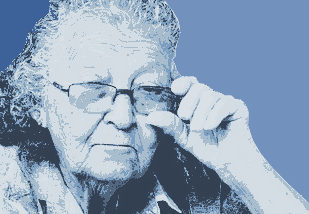Qualitative research
 Qualitative research is the exploratory side of market research, best known for focus groups to be able to listen to the genuine voice of the customer in their own words through in-depth interviews and open conversations.
Qualitative research is the exploratory side of market research, best known for focus groups to be able to listen to the genuine voice of the customer in their own words through in-depth interviews and open conversations.
Unlike the numeric based analysis of quantitative research, qualitative researchers are more like detectives, looking for clues, nuances and motivations to explore potential market drivers with a toolbox of qualitative techniques. And as always everyone is demanding new techniques for ever deeper insight such as our sensory-emotional research technique.
Qualitative research is at its strongest with face-to-face or video-based research, where researchers can assess not just what is said, but also body language and facial expressions. Modern qualitative research includes a wide range of online and remote research from online webinars to chat rooms or telephone groups and depths, and live face-to-face is becoming less common.
Why do qualitative research?
So what is there to qualitative research? In essence, qualitative research is not about answering how many, instead qualitative research is about explaining what for and why. The qualitative detective searches for clues as to motivations, desires, beliefs, ways of thinking and words for description. A qualitative researcher must look for absence as well as presence - what are and where are the gaps, difference as well as similarity - what types of people are more in tune with this idea, paradoxes as well as consistencies - what explains why people say one thing and do another.
Qualitative Research Tools
The tools the qualitative researcher uses are predominantly focus groups and individual depth interviews (IDI)or hybrid techniques like paired interviews, or triads or conflict groups.
The aim is normally to get participants talking, or showing what they think. However, it can also involve observation to see how individuals perform an action or use a website.
Qualitative research is most often carried out face-to-face, on location, or remotely by phone or internet, and may include demonstrations, selection games, role playing, observation, image collection and psychological tools like projections and mappings, and are normally guided by a skilled and specialist moderator.
The aim of the moderator to draw out the vital clues that explain behaviour and attitudes by developing a discussion - getting people to talk through in their own words how they see a particular idea or subject or product area. The aim is to go in-depth into motivations and psychological associations, in order to understand the whys of behaviour.
 The researcher has to be aware of his or her role in the discussion. Introduce an idea into the conversation unwittingly and the researcher can turn and bias the discussion, but ignore clues and key words and the conversation is just a regurgitation of other people's marketing messages.
The researcher has to be aware of his or her role in the discussion. Introduce an idea into the conversation unwittingly and the researcher can turn and bias the discussion, but ignore clues and key words and the conversation is just a regurgitation of other people's marketing messages.
The researcher must be sharp enough to probe beneath the surface of a subject and to challenge and tease out the contradictions. Is this really what you believe or are you just repeating someone else's words? Unlike, quantitative research, the moderator needs to listen and adjust to the flow of the conversation, but be prepared enough to spot new lines of inquiry.
The Qualitative Research Process
The process of a qualitative interview or qualitative discussion whether in person, or online, is typically to start with a broad overview of a subject then to narrow down to the area of interest - known as a wine-glass interview approach (broad to narrow).
The moderator tries to find out what individual's know or believe at different stages of the conversation without leading or prompting inappropriately. To help guide the moderator, a discussion guide is prepared to ensure all the pertinent points are covered and to ensure that spontaneous opinion can be gathered prior to setting the researcher's stall out about what and why the research is taking place. The moderator also needs to be well briefed both on the topic in question, and the business issues that need to be addressed.
 The discussion guide may call on the use of prompt materials such as mood boards or involve some level of pretending or play acting in order to see otherwise hidden motivations. Consequently trust and rapport are key moderator skills.
The discussion guide may call on the use of prompt materials such as mood boards or involve some level of pretending or play acting in order to see otherwise hidden motivations. Consequently trust and rapport are key moderator skills.
For people looking in from a sales type background the process can look very like a good salesman at work, opening up a broad line of discussion, then steering a conversation towards a proposition and then a close. Unlike sales however, qualitative research is more focused on understanding which proposition from many works and why. There is never a close, just a bigger picture and a multiplicity of routes. Qualitative researchers want to map their findings onto the bigger marketplace they need to understand the pitfalls and contradictions that arise, and the points of connection and resonance for the broader audience.
At the end of the research, interviews and groups are normally transcribed (which happens automatically with chat or forum-type qual). The transcripts are used for the detailed analysis and quotes and interview coding that drive the ultimate analysis. For qual, the detail of language and nuance help set the group for factors like market messages.
Deeper insights for Qualitative Research
Ethnographers and cultural anthropologists (who are sometimes sometimes one and the same) argue that techniques like focus groups are artificial. It has become a guessing game among respondents to find out what the real purpose of the research is and that the research is so managed that little original insight can be gathered. The standardisation of the process may even mean the insight is manufactured to order, rather than reflecting reality or really getting at underlying views. Some more advanced techniques break this log-jam, such as our sensory-emotional approach.
In appropriate circumstances, an ethnographic approach relies more on observation and less on direction. How do you live your life really? Show me. Don't follow my lead, lead me. Don't give me the picture postcard view, take me down the mean streets and through the back alleyways. Ethnographers will take video cameras into people's lives; be a fly on the wall and watch and learn. Not just the words in a comfortable viewing facility but the dirt and grime of real lives and real situations.
The cultural anthropological view is also contextual, observational, undirected. But whereas the ethnographer is looking for the reality of today - what do we do - the anthropologist is trying to understand what lies beneath. What are the cultural belief systems, the norms and forms that guide and direct behaviour and lead us to different emotional reactions to the same situations? What are the shared reference points, the myths and stories that determine the archetypes that a society builds to determine what it is to be a member and what society wants (and doesn't want) individuals to be.
Often, the most important part of qualitative research is just to have the conversations - to listen or see the words that customers use, and to try to think of the world from a customer's eye-view. But there are times when real depth of insight is needed. When you want to do something new. When you want to transform and overhaul or find a new angle or insight to an old product, or a new design and a new context for an existing success.
Understanding the business objective will drive the type of qualitative research that is most appropriate. And for more technical subject matter, as are often found in business-to-business or healthcare markets, the researcher also needs to be able to grasp the subject to take it into a customer or prospect interview.
Get help for qualitative research
We normally offer qualitative research as part of a larger project to help understand the dimensions of a market, the language customers use, and the details of use and opinion about products and services. Our researchers are skilled at focus groups and depth interviews, face-to-face, online with web and video tools, or carried out by phone for difficult to reach audiences, and in placing this in the larger business context.
For help and advice on carrying out qualitative research projects contact info@dobney.com